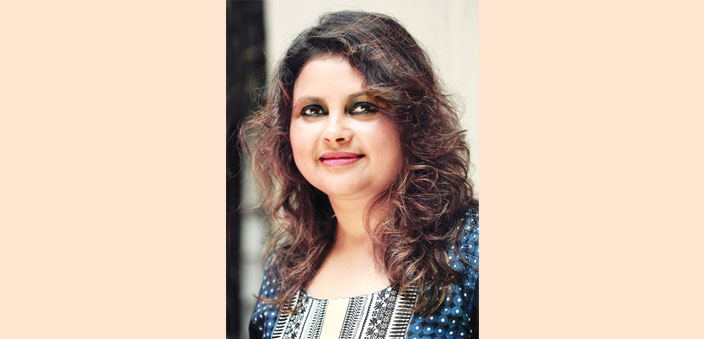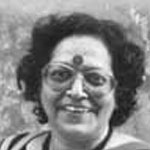Her vision is to create a kind of cinema that is a finely nuanced blend of the sociological, the emotional, the radical and the aesthetic. This sounds too ambitious a dream, but if one has to go by Baruah’s two feature films, namely Adomya and Sonar Baran Pakhi, she is a woman who delivers what she promises to. She speaks to Shoma A. Chatterji about her journey so far.
Let us hear a bit about your background as a filmmaker.
After forming my own production company in 2006, I made several short films, music videos, television serials and around 30 documentaries, before I ventured into feature films. I have now a roster of two feature films as director, producer and scriptwriter.
Tell us something about your first feature film Adomya, which was awarded for being the best film in the spiritual category at the 13th Dhaka International Film festival.
It is about Juri, a recently widowed woman who has contracted HIV from her engineer husband, who died of AIDS just six months into their marriage. She is also expecting a child who may or may not have the virus. Thrown out by her in-laws and cast aside by a socially backward village society, she has to cope with the stigma, her new-born daughter being ostracised, and ultimately of her own loneliness in the aftermath of the traumatic events. The script is tilted towards the central character, a woman, who is a victim and whose struggle only shows a need to live life against the odds, including multi-faceted ostracism, which may echo true life stories. Adomya was screened as the official selection for more than 15 international film festivals all over the world.
What inspired you to make Sonar Baran Pakhi which is a sort of biographical feature on the noted singer Padmashri Pratima Baruah Pandey? Was she related to you?
No. She was not related to me. I love our folk songs very much, so for me, those songs are the main inspiration and specially the Rajbangshi dialect, a very rare dialect in Assam and all over India. I felt that through the life of legendary folk singer Pratima Baruah Pandey and her voice, I will be able to preserve for posterity, both the folk songs as well as our Rajbangshi dialect.
What is it that pulled you to Pratima Pandey to make an entire fictionalised feature on her?
Pratima Baruah Pandey (1935-2002) was a woman, an artist and a musician with a free spirit, who liked to live life her own way. She came of royal stock and knew everything that a royal princess is trained in such as horse-riding, rifle shooting and so on. From whatever I could gather from my research, she was a very talented artist. Within such families, smoking, drinking and hunting are a part of their usual lifestyle. But Pratima’s first love was nature, which inspired her to create and sustain her own kind of music. She rebelled against her regal ancestry for the folk music and songs composed and sung by the grassroots people of Assam, such as the mahout or the elephant driver, the boatman, songs sung by cowherds, etc. She strived to rescue these songs from oblivion and bring them public recognition. She succeeded in this while she was alive.
Why did she do so few playbacks over her career?
She sang many songs for films in and out of Assam. She specially sang for HMV and for All India Radio (AIR). But due to lack of proper preservation and a good archive, her songs are not available everywhere. Only HMV and AIR have her recorded songs. Besides, technology was not as modern as it is today. I used Pratima Pandey’s original tracks in the movie, so all songs are sung by her which I collected from AIR.

What statement are you trying to make through this film?
My intention is to preserve her voice and original folk songs through this film. As a creative person, I think it is both my duty and my responsibility to archive the culture and traditional forms of music of Assam through the film so that people across the world will know and hear and see through this film the kind of traditions we have within our culture, and specially the folk songs.
The music is outstanding and is a leitmotif in this film. What kind of research did you conduct about the folk music for this film and how long did the research take?
It took me almost two years for the whole project as I had to do in-depth research. I went to Gouripur to meet some of the musicians who accompanied Pratima Pandey in her performances. I got some information and data from them. I visited the family members too specially her husband Sankar Pandey, her sister Dukhu Didi and Pratima’s daughter, along with all her relatives. I visited AIR to gather information. I consider myself to be very lucky to have heard her voice through her interview recorded when she was alive. I even read many books and journals about her during my research.
Other than the flute, which other instruments are mandatory in the folk songs of Assam in general, and Goalpara in particular?
In Assam, folk instruments of all kinds are used by performers, but in Goalpara I personally noticed that performers using the Dotara, the Sarinda and Dhol. We shot the film in 2015 at locations in Kolkata and Assam over 20 days for the shoot.
Why did you name the film Sonar Baran Pakhi which actually means ‘The golden-coloured bird’?
The name Sonar Baran Pakhi was inspired by one of her famous songs. Her voice is uncommon and distinctly different, and till this day, no one can sing like she did. We miss her voice which had a unique quality in terms of tenor, pitch, tuning and so on.
What did you find unique about her character other than her multifaceted talents?
Pratima remained unaffected by the fame and the acclaim that came her way. Laurels like the Sangeet Natak Akademi Award, the Padmashree and many more titles were bestowed on her by cultural bodies across Assam. Her naive nature and down-to-earth personality ensured she continually remained in the hearts of the common folk throughout her life.
As a lover and practitioner of cinema, what did you hope to accomplish through this film?
I intended to capture the uncommon threads of life of this gifted artist who, despite being a girl child and being born and brought up in a royal family, braved all odds, mingled with mahouts (elephant drivers), moishals (buffalo boys) and naworias (river boatmen) in a rural ambience. From the folklorists’ point of view, her renditions of those fascinating folk songs at national and international platforms with unbridled passion, keeping intact the indigenous flavour, made all the difference. This, I felt, called for a feature-length portrayal of her life and works.


 [/column]
[/column]